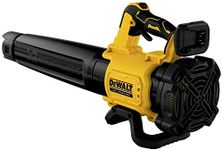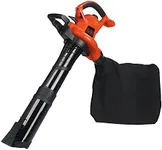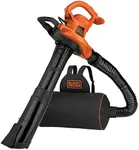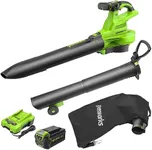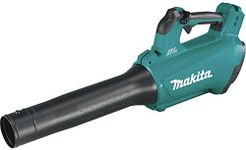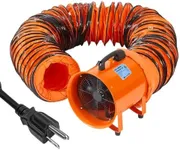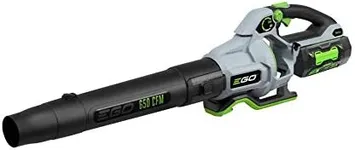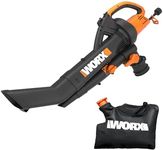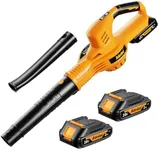Buying Guide for the Best Cordless Leaf Blower Vacs
Choosing the right cordless leaf blower vac can make yard work much easier and more efficient. When selecting a model, it's important to consider several key specifications to ensure you get a product that meets your needs. Understanding these specs will help you make an informed decision and find the best fit for your specific requirements.Battery VoltageBattery voltage indicates the power of the leaf blower vac. Higher voltage typically means more power, which can result in better performance. Common voltage ratings range from 18V to 80V. For light tasks like clearing small patios or driveways, a lower voltage (18V-36V) may suffice. For larger yards or more demanding tasks, a higher voltage (40V-80V) will provide the necessary power. Consider the size of your yard and the type of debris you need to clear when choosing the right voltage.
Air SpeedAir speed, measured in miles per hour (MPH), determines how fast the air is expelled from the blower. Higher air speeds can move heavier debris and cover larger areas more quickly. Typical air speeds range from 90 MPH to over 200 MPH. For light tasks like clearing leaves from a patio, lower air speeds (90-120 MPH) are sufficient. For larger areas with heavier debris, higher air speeds (150-200+ MPH) are more effective. Match the air speed to the type of debris and the size of the area you need to clear.
Air VolumeAir volume, measured in cubic feet per minute (CFM), indicates the amount of air the blower can move. Higher CFM values mean the blower can move more debris at once. Typical CFM ratings range from 200 to 600. For small yards or light debris, a lower CFM (200-300) is adequate. For larger yards or heavy debris, a higher CFM (400-600) is more suitable. Consider the amount and type of debris you need to move when selecting the appropriate air volume.
Battery LifeBattery life determines how long the leaf blower vac can operate on a single charge. Longer battery life allows for extended use without needing to recharge. Battery life can vary based on the voltage and the specific model. For small tasks, a shorter battery life (15-30 minutes) may be sufficient. For larger tasks, look for models with longer battery life (30-60+ minutes) or consider purchasing additional batteries. Think about the duration of your typical yard work sessions when choosing the right battery life.
WeightThe weight of the leaf blower vac affects how easy it is to handle and maneuver. Lighter models are easier to carry and use for extended periods, while heavier models may offer more power but can be more tiring to use. Weights typically range from 5 to 15 pounds. For light, occasional use, a lighter model (5-8 pounds) is ideal. For more frequent or heavy-duty use, a slightly heavier model (8-15 pounds) may be necessary. Consider your physical strength and the duration of use when selecting the right weight.
Noise LevelNoise level, measured in decibels (dB), indicates how loud the leaf blower vac is during operation. Lower noise levels are more comfortable for the user and less disruptive to neighbors. Noise levels typically range from 60 dB to 100 dB. For residential areas, a lower noise level (60-75 dB) is preferable. For larger properties or less noise-sensitive areas, higher noise levels (75-100 dB) may be acceptable. Consider your environment and noise sensitivity when choosing the appropriate noise level.
Mulching CapabilityMulching capability refers to the leaf blower vac's ability to shred leaves and debris into smaller pieces, which can be used as mulch or for easier disposal. Some models offer a mulching ratio, indicating how much the debris is reduced (e.g., 10:1 means 10 bags of leaves are reduced to 1 bag of mulch). If you plan to use the debris as mulch or want to reduce the volume of waste, look for models with a good mulching ratio (10:1 or higher). Consider your need for mulching when selecting a model with this feature.
